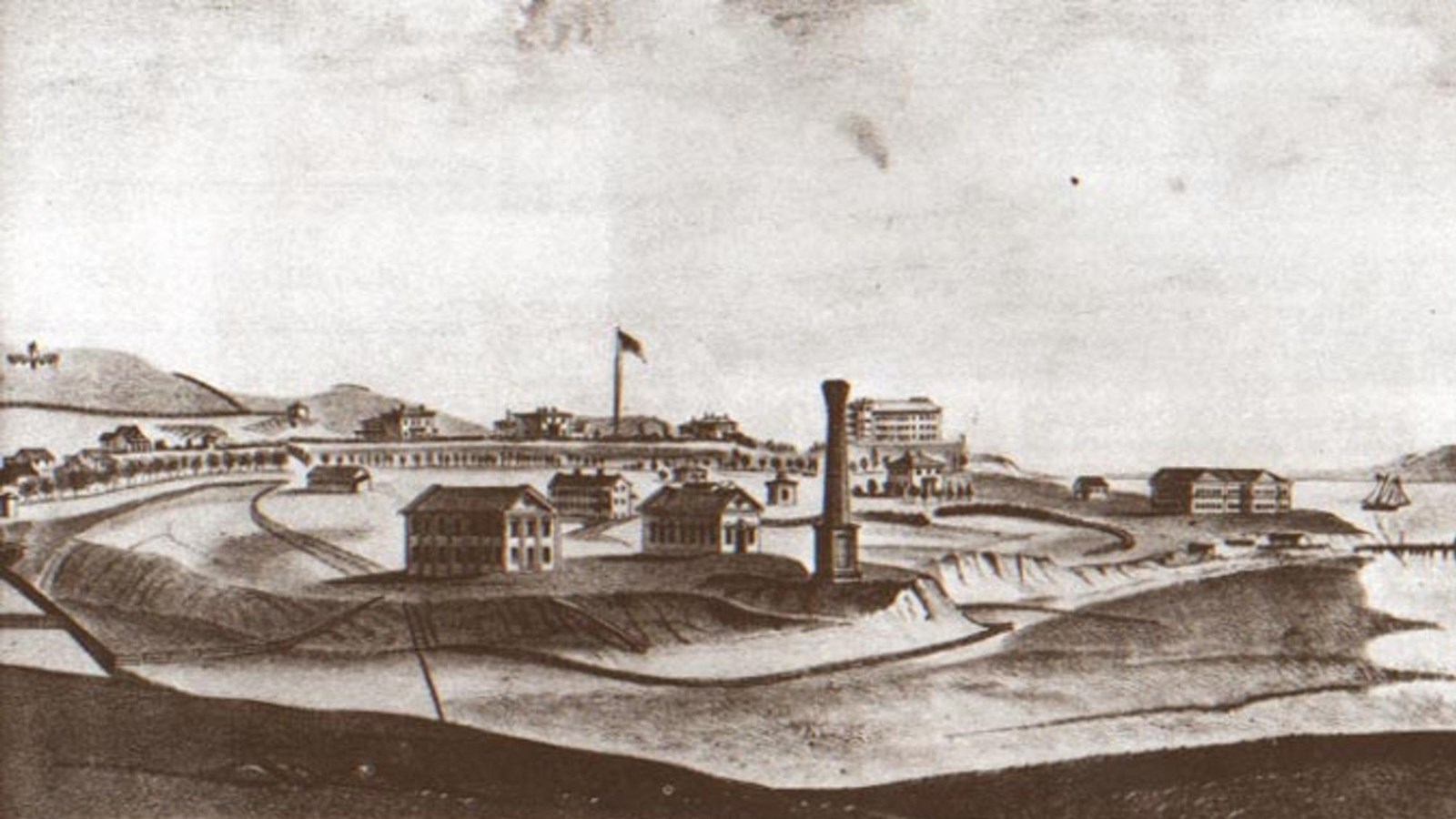Last updated: September 15, 2020
Place
Benicia Arsenal

Public Domain, https://en.wikipedia.org/wiki/Benicia_Arsenal#/media/File:Benicia_Arsenal_1878.jpg
In 1847 a 252-acre parcel of land adjoining the Benicia city limits on the east was acquired for a military reserve. First occupation of the post was on April 9, 1849, when two companies of the 2nd Infantry set up camp to establish Benicia Barracks. In 1851, after the urging of General Percifer F. Smith, the first Ordnance Supply Depot in the West was established in Benicia. In 1852 it was designated Benicia Arsenal. The grounds of the Benicia Arsenal are famous for stabling the Army's one and only Camel Corps--an idea dreamt up in 1855 by Secretary of War Jefferson Davis (later Confederate President). The short-lived Camel Corps was disbanded in 1863, but the Camel Barns, built in 1855, remain and are now the Benicia Historical Museum. The Benicia Arsenal was a staging area during the Civil War for Union troops from the West, and the installation remained a garrisoned post until 1898 when troops were assigned to duty in the Philippine Islands during the Spanish-American War. During World War I, Benicia Arsenal gave ordnance support to all large Army installations in the Western States as well as supplying Ordnance material to American expeditionary forces in Siberia.
In the 24 hours following the Pearl Harbor bombing, 125 separate truck convoys were loaded and dispatched from the Benicia Arsenal, leaving its stock of ammunition, small arms and high explosives completely exhausted. Throughout the war, the arsenal supplied ports with weapons, artillery, parts, supplies and tools. In addition, the arsenal overhauled 14,343 pairs of binoculars, manufactured 180,000 small items for tanks and weapons and repaired approximately 70,000 watches. However, the arsenal is most famous for supplying munitions to Lieutenant Colonel Jimmy Doolittle for the first bombing raid on Tokyo on April 18, 1942, launched from the USS Hornet (whose successor is now docked at the former Alameda Naval Air Station).
Prior to 1940, the arsenal employed 85 civilian employees at Benecia Arsenal; by October 1942, the payroll had reached 4,545. The labor shortage in 1944 forced the arsenal commander to put 250 Italian and 400 German prisoners of war to work, alongside 150 juveniles from the California Youth Authority. Women comprised nearly half the civilian employee force. During the Korean War, the number of civilians reached an all-time high of 6,700 workers. Benicia Arsenal was deactivated in 1963.The Benicia Arsenal is located at Army Point and I-680 in Benicia. The Benicia Historical Museum is located at 2024 Camel Rd. There is a fee for admission; tours of the area are offered. Visit the museum's website for further information.
